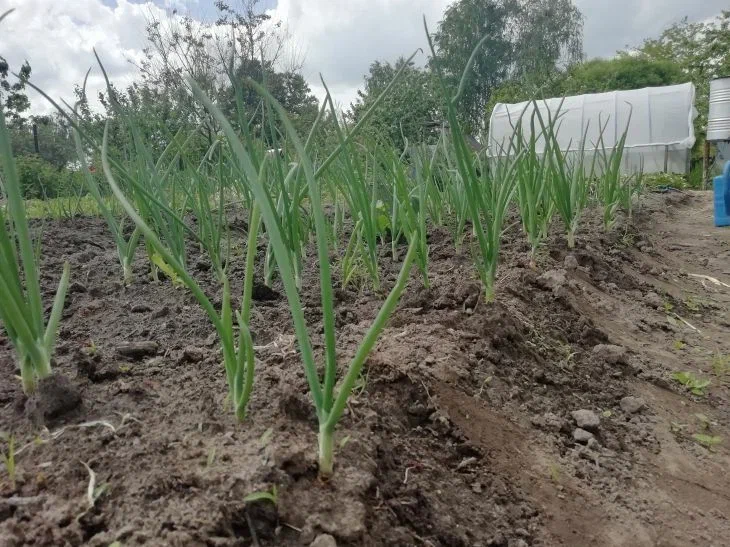Planning the planting of onion sets requires special attention to soil preparation, since the future harvest largely depends on it.
The right amount of nutrients and favorable conditions play a key role in the development of strong and healthy bulbs.
Basic soil requirements
For onion sets, loose, fertile soil with a neutral or slightly acidic reaction is preferable. Heavy clay soils must be loosened by adding sand and humus.

Providing good aeration is an important condition for the development of the root system. Onions do not tolerate stagnant water, so it is necessary to provide good drainage.
Organic fertilizers
Organic fertilizers are an integral part of preparing the soil for onions. Humus or compost are excellent options that enrich the soil with nutrients and improve its structure.
It is recommended to add them in the fall during digging or immediately before planting, but not fresh. Wood ash, rich in potassium and microelements, will also be a useful additive. It will not only saturate the soil with the necessary substances, but will also help reduce its acidity.
Mineral fertilizers
Mineral fertilizers play an important role in providing onions with the necessary elements at the initial stage of growth. Complex fertilizers containing nitrogen, phosphorus and potassium are the best choice.
Nitrogen promotes the growth of green mass, phosphorus – the development of the root system, and potassium – the formation of bulbs. It is important to follow the instructions for use and not exceed the recommended dosages so as not to harm the plants.
Special additives
In addition to basic fertilizers, there are special additives that can improve the conditions for onion growth. For example, dolomite flour will help deoxidize the soil, if necessary. Sand or perlite will improve the structure of heavy soils, making them looser and more breathable. The use of biopreparations with beneficial microorganisms promotes the development of the root system and increases plant resistance to diseases.
How to apply fertilizers correctly
Fertilizers are applied to the soil evenly before digging or loosening. Compost or humus is evenly distributed over the surface of the bed and then incorporated into the soil.
Mineral fertilizers can be added in granular form, scattered over the surface and lightly mixed with the soil. Wood ash can also be added directly to the soil during digging, but it is important to remember that it is an alkaline fertilizer, so it must be used in moderation.
Preparing the garden bed
After applying fertilizer, the bed must be thoroughly dug or loosened. This will ensure an even distribution of nutrients and improve soil aeration.
The beds need to be leveled and a flat surface for planting onions should be formed. It is important to ensure that there are no lumps or large irregularities. A prepared bed will promote uniform germination of the onion sets and their further development.
Timing of fertilization
The optimal time for applying fertilizers is 1-2 weeks before planting onions. This will allow the nutrients to be absorbed into the soil and prepare it to receive the plants.
If fertilizers are applied in the fall, the soil will only need to be loosened a little in the spring before planting. Timing may vary depending on climate conditions and soil type.
Alternative options
Instead of chemical fertilizers, you can use vermicompost or rotted manure, which will also enrich the soil with nutrients. Some gardeners use green manure, which is planted in the fall and plowed into the soil in the spring.
Green manure is a source of organic matter and helps improve the soil structure. All these methods help create favorable conditions for onion growth and get a good harvest.
